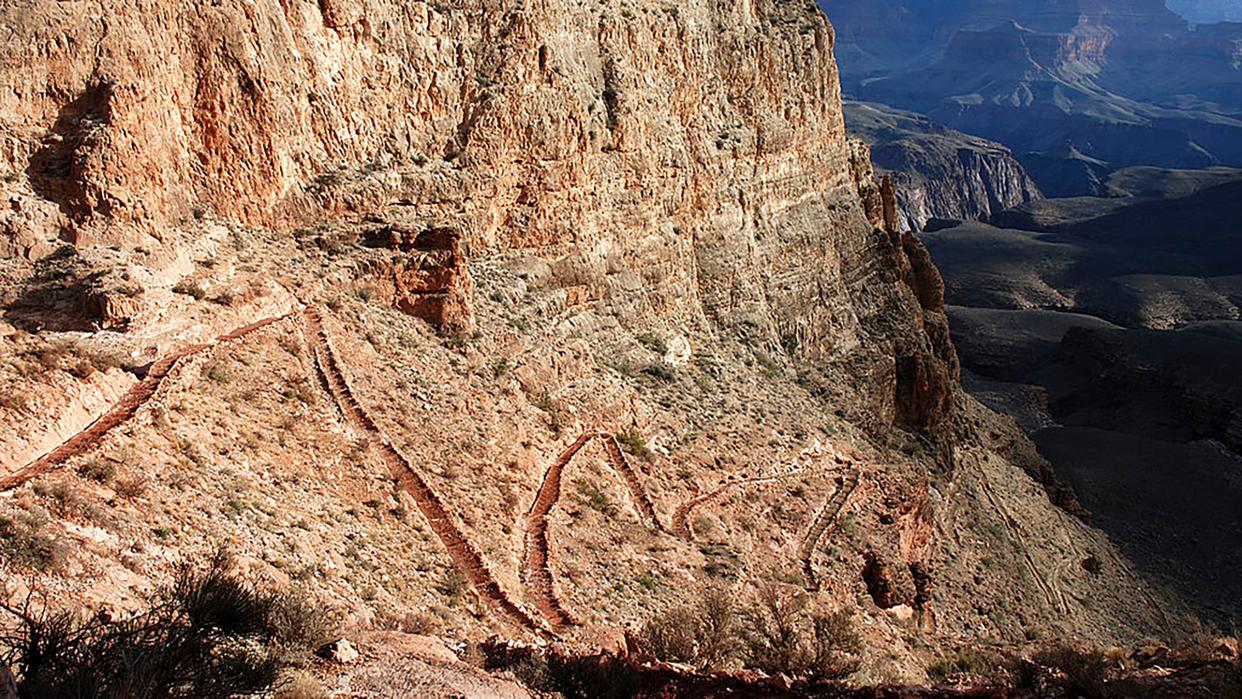A Grand Canyon Hiker Died While Attempting a Rim-to-Rim Trek

This article originally appeared on Outside
A 55-year-old hiker from Manassas, Virginia died while hiking in the Grand Canyon on Saturday, September 9, National Park officials said. At 1:55 P.M., emergency personnel received an emergency call of a hiker in distress on the canyon's North Kaibab Trail, and sent crews to perform a rescue.
According to the NPS, the hiker, identified by park officials as Ranjith Varma, became unresponsive shortly after the call. Bystanders initiated CPR. Meanwhile, NPS search and rescue began a helicopter rescue. "Given the location, specialized helicopter maneuvers were employed to allow rangers to assume care of the hiker, initiating advance (sic) life support efforts," said a spokesperson for GCNP.
Unfortunately, rescuers were unable to resuscitate Varma. Officials have not released his official cause of death, and the local coroner had not released a report at the time of this story's publishing.
Officials said Varma was attempting to complete the canyon's famed 21-mile rim-to-rim trek in one day at the time of his death.
Hikers and runners who attempt a rim-to-rim crossing in a day (as well as those through-hiking the Arizona Trail) often arrive at the Canyon in May, when the North Rim facilities are typically open and the inner canyon heat is not yet extreme. But this year, starting that early in the year was impossible.
The Grand Canyon, like much of the mountain West this year, received record snowfall. More than 250 inches of snow blanketed the National Park this year--100 inches above the annual average. Not only did this snowfall delay the opening of the North Rim, but it caused extensive rockslide damage to the North Kaibab trail. The snowfall and trail damaged forced crews to delay opening the access to the North Rim until June 16 of this year, about a month late. The delay torpedoed the spring season for rim-to-rim hikers and runners, forcing them to either complete abridged hikes or push their attempts back later in the season. By the time the trail opened, temperatures in the inner canyon averaged 105 degrees Fahrenheit.
A day-hiker died of a heat-related illness in July, hiking in the remote Tuweep area of the park. The temperature that day was "well over 100 degrees Farenheit," according to the NPS.
While the North Kaibab trail runs to the Canyon's North Rim and is one of the cooler areas in the park, the inner canyon temperatures at Phantom Ranch exceeded 100 degrees. Along with the report of Varma’s death, NPS officials warned hikers not to hike in the inner canyon during the heat of the day, between 10 A.M. and 4 P.M.
After the route leaves the North Kaibab Trailhead it descends about 4,000 feet rapidly toward Cottonwood Campground. "The mile-and-a-half-long section from Supai Tunnel to Redwall Bridge that’s always going to be hot and sunny," says Stefan Ballek, a program manager for Wildland Trekking that runs backcountry hiking trips in the park. After the steep descent, the trail opens up into a wider valley. "It's a hot, exposed section but relatively flat for the Grand Canyon, so you can move through it more quickly," Ballek continued. This is the section of trail where Varma was found by rescuers.
It is extremely rare for national parks to issue weather closures, and parks don't close due to extreme heat. Instead, they are offering resources like Plan Like a Park Ranger and informational web pages about heat illness.
While Arizona's mind-boggling heat wave seems to be slowly ebbing, late-summer temperatures are still in the high 100s. Phoenix busted heat records left and right this year, with all 31 days of July exceeding 110 degrees. Fall is coming, and October typically holds the best window where rim-to-rim attempts are feasible with average highs in the low 80s.
"Once you're below the rim, summer can start in April," says Ballek. "The later you can push your start, the better."
For exclusive access to all of our fitness, gear, adventure, and travel stories, plus discounts on trips, events, and gear, sign up for Outside+ today.

